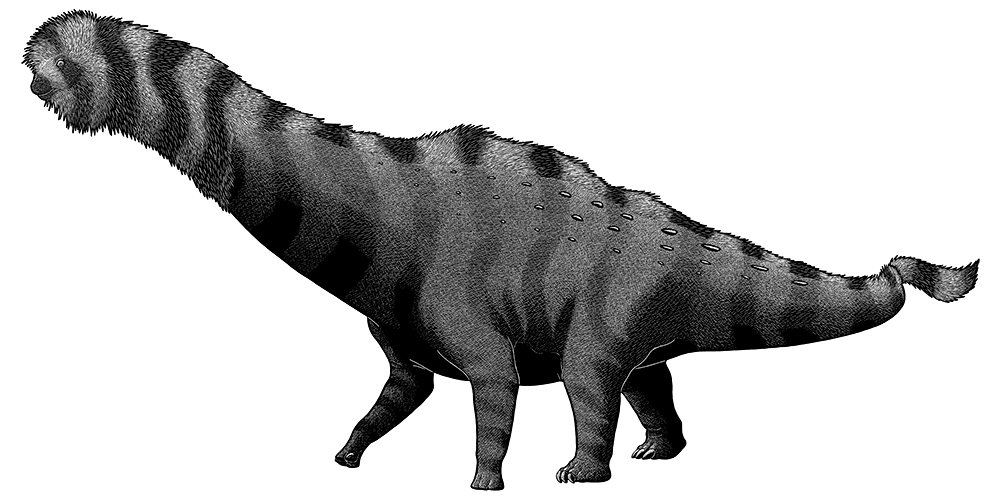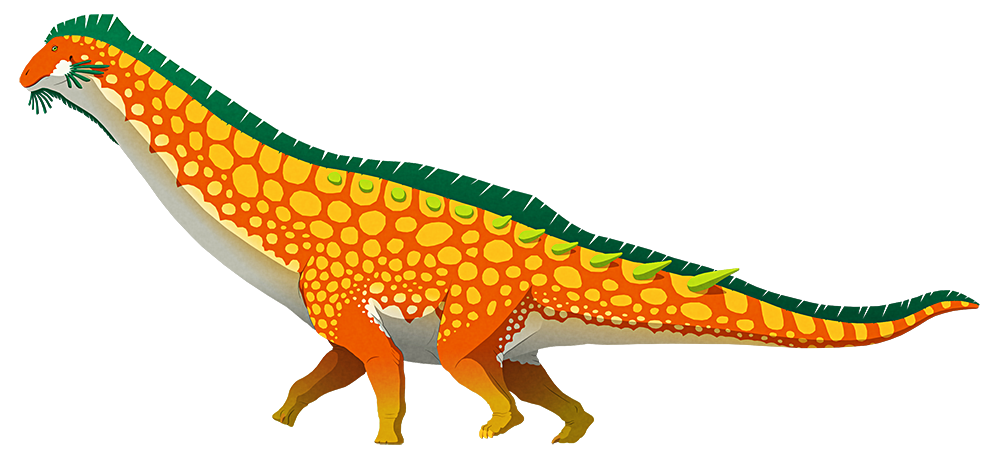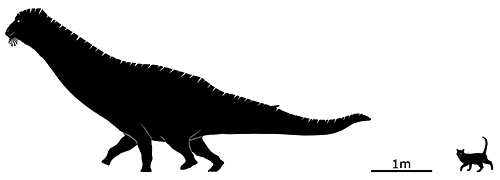Originating from Japanese monster movies like Godzilla, the word “kaiju” is now often used to refer to giant creatures in general – and so it was only a matter of time before a huge sauropod dinosaur was named after the concept.
Kaijutitan maui* was a titanosaur living in Argentina during the Late Cretaceous, about 89-86 million years ago. It’s only known from fragmentary remains, so its full size is difficult to estimate, but it was probably somewhere in the region of 20m long (66′). Nowhere close to the largest sauropod, but possibly one of the heaviest since it does seem to have been rather chunkily built, with stout limbs and an estimated weight of 40-60 tonnes (44-66 US tons).
* Not named for the Polynesian hero, apparently, but for the initials of the Museo Argentino Urquiza.



